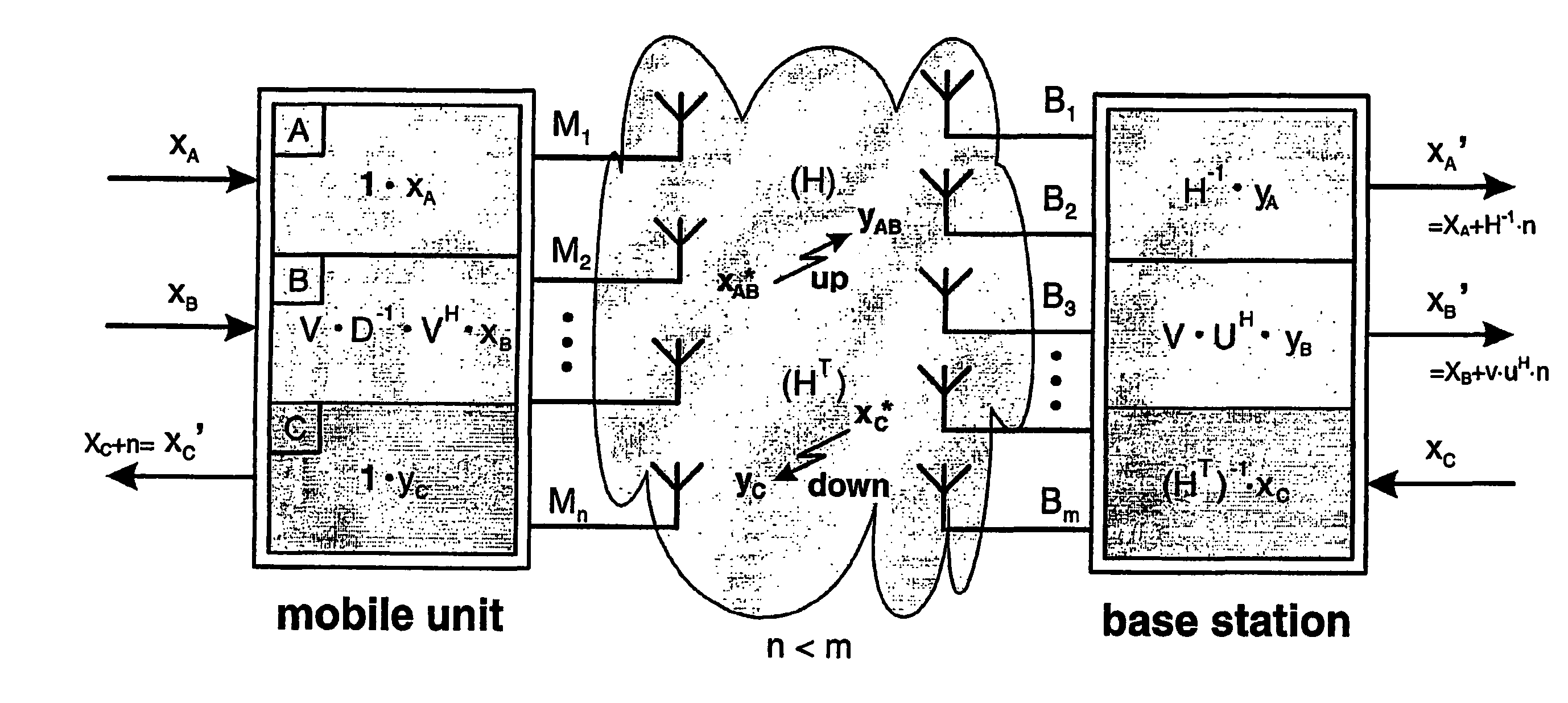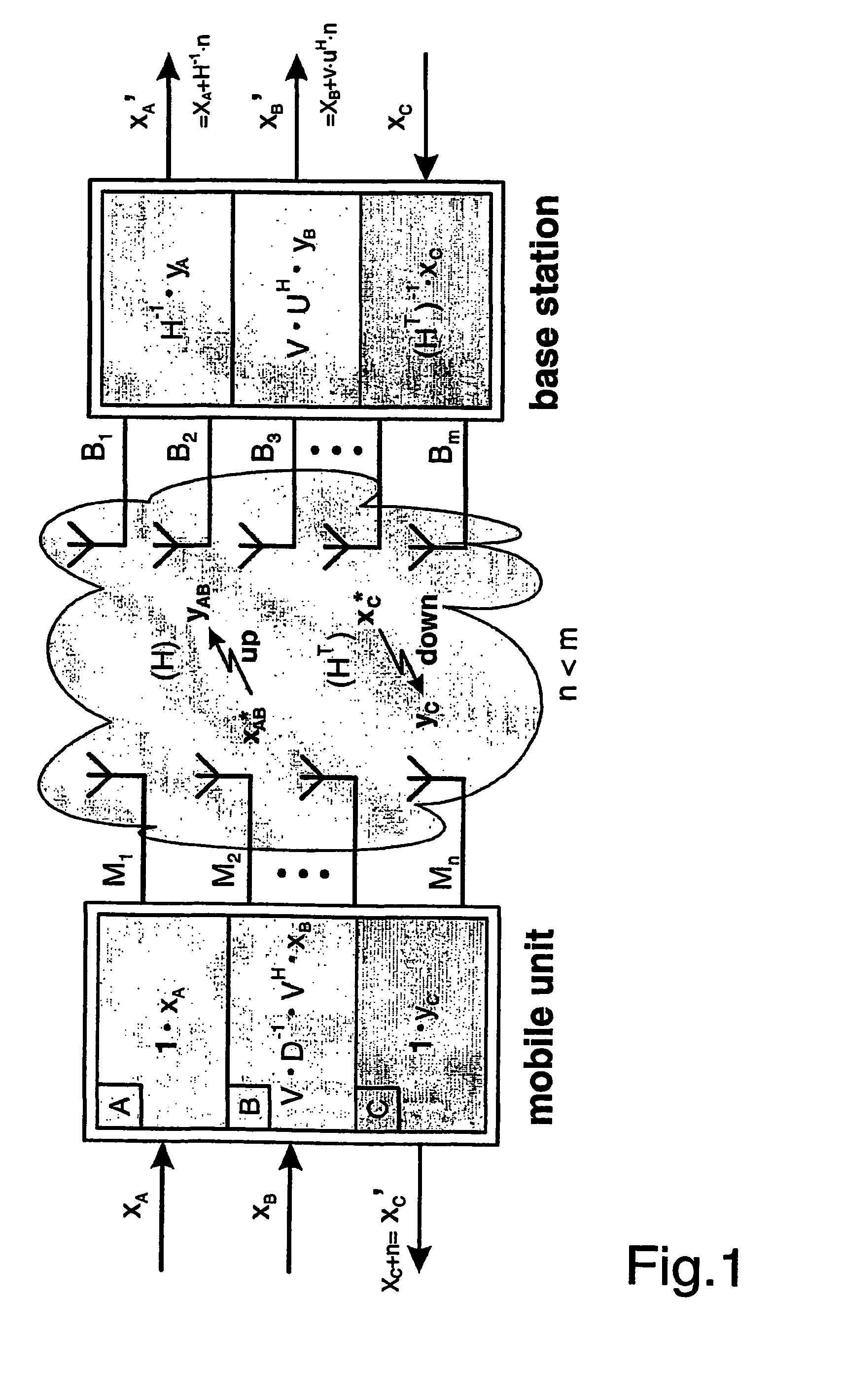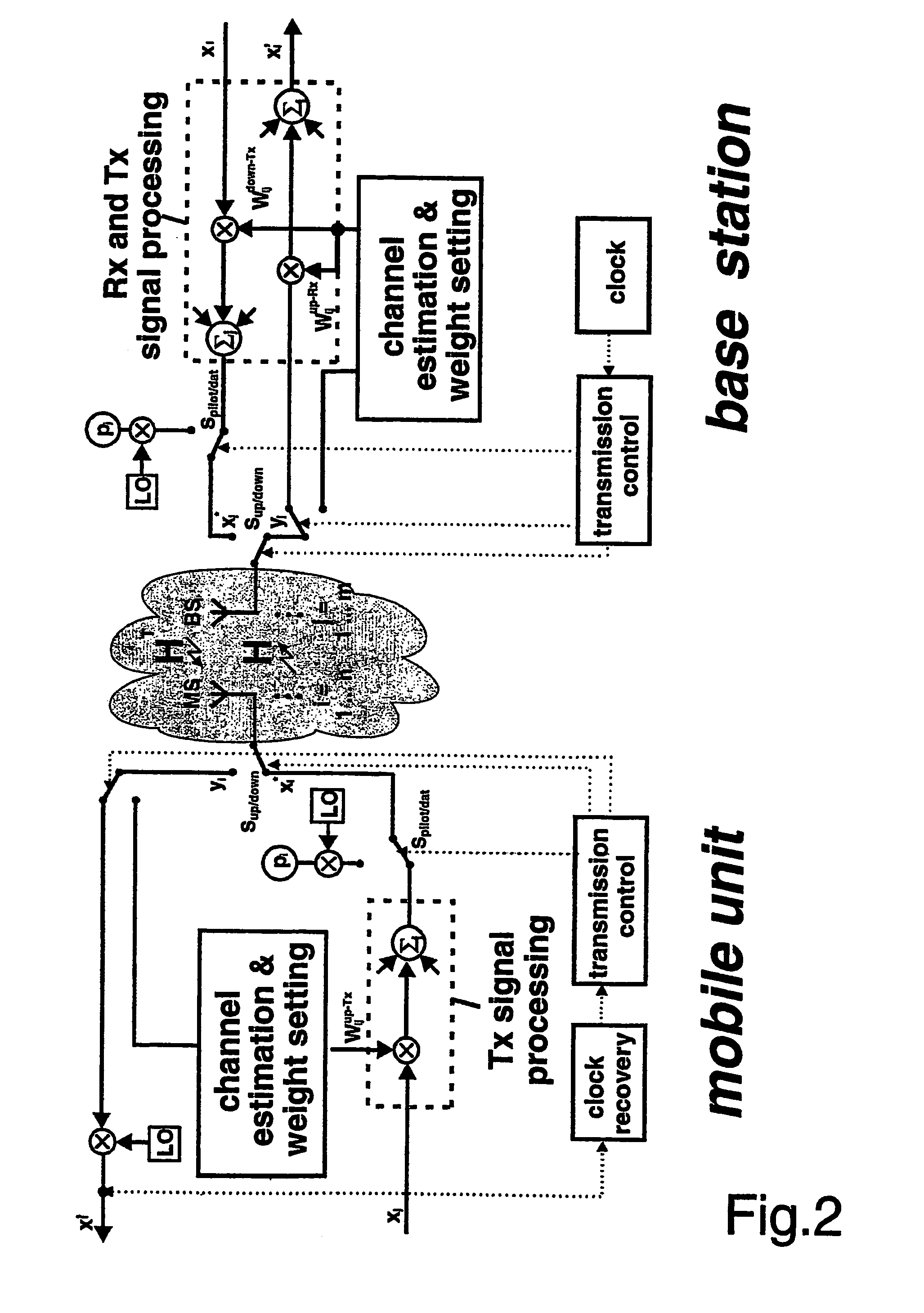Adaptive signal processing method in a MIMO-system
a signal processing and mimo-system technology, applied in multiplex communication, duplex signal operation, polarisation/directional diversity, etc., can solve the problem that the characteristics of the receiver remain largely unaffected, and achieve low transmission power, high realization efficiency, and easy operation
- Summary
- Abstract
- Description
- Claims
- Application Information
AI Technical Summary
Benefits of technology
Problems solved by technology
Method used
Image
Examples
Embodiment Construction
[0041]The different transmission schemes in a MIMO-channel are depicted in FIG. 1. Scheme A designates the simplest conceivable MIMO-system which is sufficient for receiving-side signal processing and which is known from the prior art (see [6], for instance). Schema B depicts the transmission side and receiving side signal pre and post processing in accordance with the invention at channel inversion in the uplink transmission direction, and scheme C shows the exclusively transmission side signal processing in accordance with the invention at channel inversion in the downlink transmission direction. In the MIMO-system shown the uplink transmission station is formed by a mobile station (mobile unit) with n antennae (1 . . . n) and the downlink transmission station is formed as a base station with m antenna (1 . . . m). n<m. The mathematical operations to be used on the transmission vectors x at the transmission side and on the receiving vectors y at the receiving side which have been ...
PUM
 Login to View More
Login to View More Abstract
Description
Claims
Application Information
 Login to View More
Login to View More - R&D
- Intellectual Property
- Life Sciences
- Materials
- Tech Scout
- Unparalleled Data Quality
- Higher Quality Content
- 60% Fewer Hallucinations
Browse by: Latest US Patents, China's latest patents, Technical Efficacy Thesaurus, Application Domain, Technology Topic, Popular Technical Reports.
© 2025 PatSnap. All rights reserved.Legal|Privacy policy|Modern Slavery Act Transparency Statement|Sitemap|About US| Contact US: help@patsnap.com



